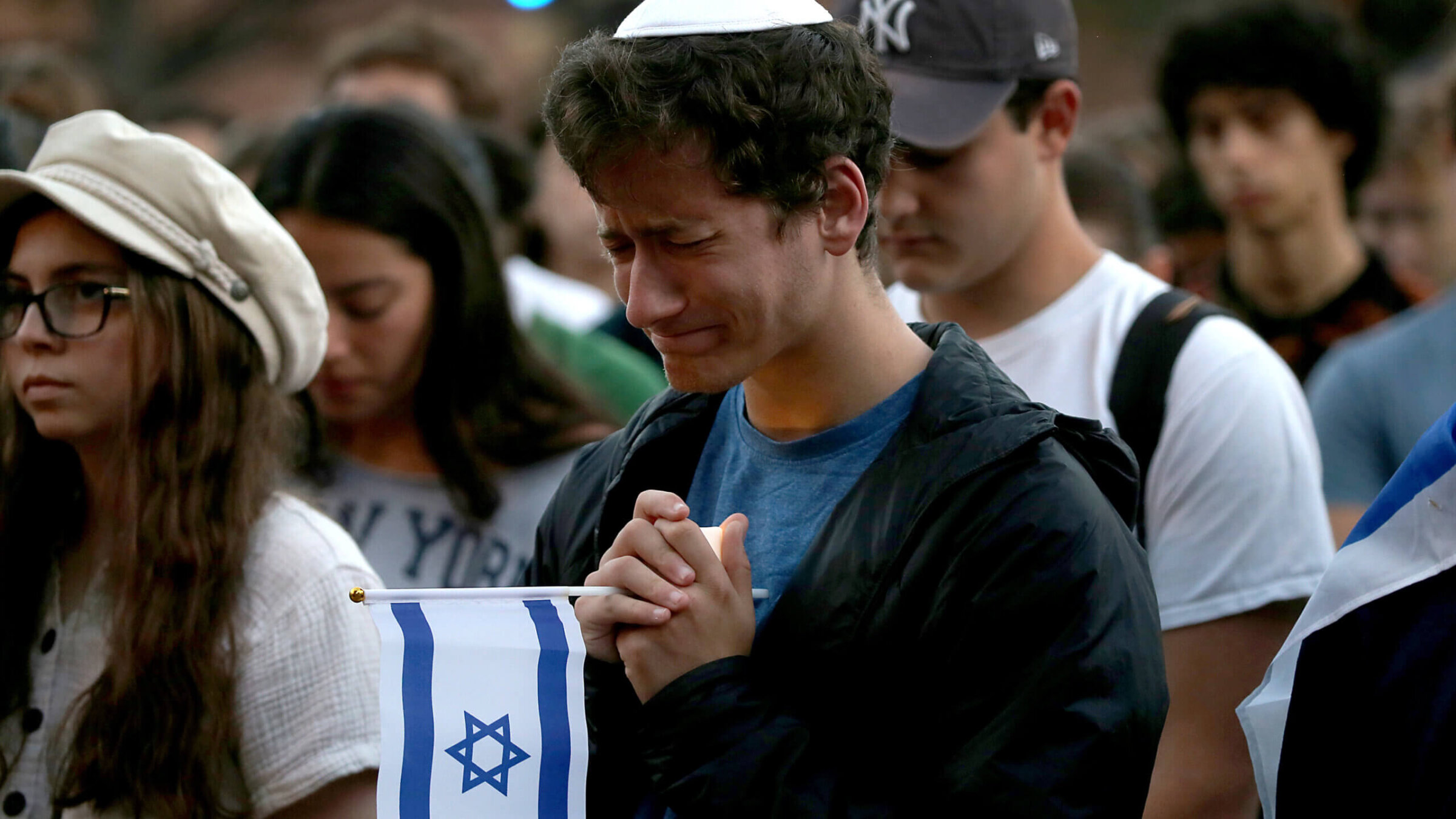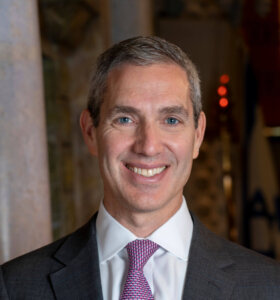Jewish mourning rituals are not enough for Oct. 7, because our loss is ongoing
On this communal yahrtzeit, we must find a path forward even as we remember the pain

USC students attend a vigil on campus in support of Israel on Oct. 10, 2023. Photo by Luis Sinco / Los Angeles Times
This essay was adapted from the final chapter of the author’s new book, For Such a Time as This: on Being Jewish Today.
In 25 years as a rabbi, no one I have counseled through the Jewish stages of mourning has ever shared that they have “gotten over” the loss. At best, the ritualized phases help us put one foot in front of the other, to remember the people who have died even while we look toward the future with hope.
Since the horrific attacks of Oct. 7, I have returned to these ritualized stages time and again in search of a scaffolding that could help us make sense of our collective, communal loss.
Jewish mourning starts with aninut — Hebrew for “deep sorrow” — which is the period between death and burial, when words fail. We do not recite the kaddish prayer, nor formally receive visitors. Family members are just acclimating to their painful new reality, and making preparations for the service.
Next, we sit shiva— seven days after burial where mourners do little beyond accepting words of condolence from visitors and sharing memories of the deceased. The community provides them with a minyan so they can recite the Mourner’s Kaddish. On the seventh day, we get up from shiva and walk around the block as a reentry to some semblance of regular life.
Shloshim — Hebrew for 30, the number of days after burial for this stage — has us return to work, school and daily routines, but avoiding non-essential socializing and entertainment. Finally, there is a year of avelut — lamenting — a somber year where we avoid celebrations with live music, and surviving children say kaddish daily for their lost parents. We may culminate the year with the unveiling of a memorial headstone, and we mark the anniversary of the death — called a yahrtzeit — with annual recitation of kaddish.
These rites give us tools to journey through the emotional phases of loss: shock, anger, grief and, eventually, acceptance and a return to life — not as it was before, but a changed life, absent that loved one. The rituals do not take our pain away, but give us a framework for living with it. We remember, but we step forward. The ache remains, but we nevertheless plan for the future.
The Jewish people have struggled to move through the stages of grief since Oct. 7 because the losses continue. The death of a beloved relative happens on a certain day; this year we have seen daily sacrifices of civilians and soldiers, and worried throughout about the unknown fate of the hostages. So even as we approach the yahrtzeit, we have a foot stuck in perpetual aninut, when words fail.
The cascade of Oct. 7 is still rippling through Israel and the world — the traumas are not yet fully known. Hence, the mourning process overruns the familiar Jewish framework..
As we approach this yahrzeit, we confront the extra cruelty that the attack was perpetrated on one of the most joyous days of the Jewish calendar, Simchat Torah. This holiday of dancing and celebration, when we complete a cycle of Torah reading and immediately begin it again, will now be forever associated with memorial observances.
The thought of kaddish-filled Simchat Torahs is difficult. But themes of remembrance and renewal have always been intertwined in the holiday. The rabbis asked that we read of the death of Moses, in the final verses of the book of Deuteronomy, in the same sitting that we open up to the creation of the world, as described in the first verses of Genesis. Endings and beginnings, at one and the same time.
To begin again: This is the spiritual DNA of our people.
As Jews, when we open the Bible, we focus not so much on what Adam and Eve did or did not do in the garden, but on their ability to reconstitute their lives following their brief stay there. The first couple, made painfully aware of the limitations of their own mortality, extend the reach of their existence by bringing children into this world.
As the Holocaust survivor Elie Wiesel famously wrote: “According to Jewish tradition, creation did not end with man, it began with him. When He created man, God gave him a secret — and that secret was not how to begin, but how to begin again.”
Many of our people’s stories are about new beginnings — individuals, families, and sometimes an entire nation carving a path forward after loss. Noah plants a vineyard following the devastating flood. Abraham and Sarah journey to Canaan after the death of Abraham’s father, Terah, and a lifelong struggle with infertility. Jacob seeks to rebuild his life on his own terms, in a new land, after fleeing his brother, Esau, and his household of origin. Joseph rises up to save himself, his adopted homeland of Egypt, and his brothers who had thrown him into a pit and sold him into slavery.
Like the Israelites as they crossed the sea into freedom, these exemplars found the strength to integrate their sorrow into a vision for a brighter future.
A midrash I love offers the extraordinary thought that even God had to find the spiritual wherewithal to begin anew. It says that God created and destroyed not one, not two, but a thousand worlds before settling on the one in which we currently live, with all its imperfections.
If God had to cultivate resilience, how much more must we.
From the prophet Jeremiah’s command to rebuild following exile, to the establishment of rabbinic Judaism after the destruction of the Temple, to the founding of the state of Israel in the wake of the Shoah — rebuilding and renewal is in the DNA of our people.
The question facing the Jewish people today is not how to begin, but how to begin again. I grieve over the victims of Oct. 7. I think of the Israeli soldiers fighting for Israel’s security in Gaza and Lebanon. I think of the civilians caught in the crossfire of war. I grieve over the loss of innocent Palestinian and Lebanese lives — not to do so would be inhuman.
In Jewish mourning, we find that path forward even as we remember the pain of the loss. This grief can only be managed, never transcended. We must nonetheless consider the future, build a new vocabulary to help us work toward it, and, as our tradition teaches, honor the dead by choosing life.
At the conclusion of every Jewish wedding, we break a glass and sing a few words — If I forget thee O Jerusalem, let my right-hand wither — to make clear that even and especially as we set our sights on the future with joy, we make space for the pain of our people.
The ritual has taken on more power since Oct. 7. The shards of glass under the wedding canopy represent the Jewish people, broken and scattered. And, like the wedding couple, we must step forward into the future, holding pain even as we dream of brighter times — ready to begin, and begin again.















